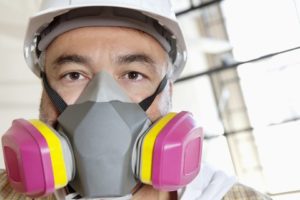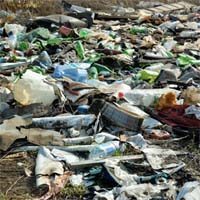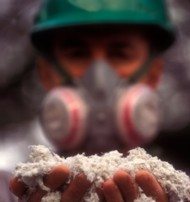Pleural Mesothelioma Risk Among Workers May Be Higher in Winter
 A leading authority in the occupational health and safety space is warning workers to be aware that their pleural mesothelioma risk may be higher in the winter.
A leading authority in the occupational health and safety space is warning workers to be aware that their pleural mesothelioma risk may be higher in the winter.
The website Occupational Health & Safety says winter is a prime season for exposure to toxins like asbestos that can threaten respiratory health. Asbestos is the primary cause of malignant pleural mesothelioma worldwide.
In a new online article, the site says the combination of dry air, colds and allergies, closed up work spaces, and poor ventilation can increase the risk for serious respiratory diseases.
Why Winter Can Be Dangerous for Workers
Although anyone can get malignant mesothelioma, it is usually considered an occupational disease. People in certain kinds of jobs face a much higher pleural mesothelioma risk than the general public. That is because workers in construction trades, industrial workers, mechanics, plumbers and others are most likely to encounter asbestos particles at work.
“Microscopic fibers and dust can be extremely dangerous to the lungs because they can remain inside the body indefinitely,” states the Occupational Health & Safety article.
That is the case with asbestos dust. Asbestos is a cancer-causing agent according to the US Department of Health and Human Services, the EPA and the International Agency for Research on Cancer. Anyone who inhales or swallows even tiny amounts of asbestos has a higher pleural mesothelioma risk.
The more asbestos there is in the environment, the higher the risk. In winter, manufacturing plants, construction sites, and mechanic shops are more likely to close their doors, trapping any toxins inside. In the confined space, toxins can build up to dangerous levels.
If the ventilation system or protective gear cannot manage the higher concentration of asbestos dust, it raises the likelihood that workers will face a mesothelioma diagnosis down the road.
Reducing Pleural Mesothelioma Risk
There are things that workers can do to mitigate their pleural mesothelioma risk in the winter. OHS says it starts by understanding the causes of respiratory diseases.
- Inadequate protection: OHS recommends that gear such as masks and ventilators be checked to ensure they’re working properly.
- Pre-existing illnesses: Workers should not come to work if they are suffering from colds or seasonal allergies. Colds and allergies weaken the lungs, making them more vulnerable to toxins. They also increase the risk for coughing, which could cause a person to inhale more irritating dust.
- Low humidity: Dry air is another risk for lung irritation. OHS says adequate humidification makes breathing easier and reduces the risk of illness. Anyone who works in a dry workplace, especially if they have a higher pleural mesothelioma risk, should drink plenty of water in winter.
- Smoking: Smoking causes lung cancer. But it can also increase pleural mesothelioma risk. OHS says people who work around asbestos or other airborne toxins should not smoke.
If you know you have been exposed to asbestos and you develop mesothelioma symptoms, schedule a medical exam as soon as possible. Early diagnosis increases the chances of long-term survival.
Source:
“Protecting Respiratory Health in Workers During the Winter Months”, Occupational Health & Safety website, December 9, 2021, https://ohsonline.com/Articles/2021/12/09/Protecting-Resp-Health.aspx?Page=3





